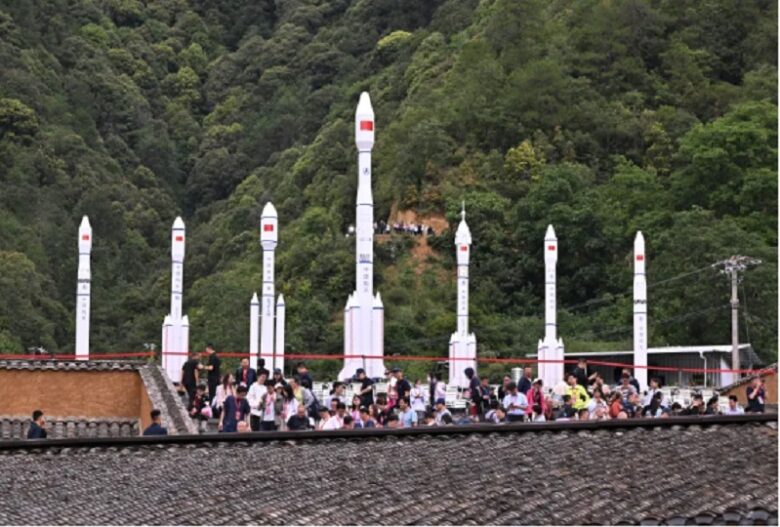On Saturday, a satellite developed through cooperation between France and China embarked on a mission to explore the universe’s most powerful explosions.
Weighing 930kg (2,050 pounds), the satellite carries four instruments: two French and two Chinese.
It launched at approximately 3 p.m. (07:00 GMT) aboard a Chinese Long March 2C rocket from the Xichang Satellite Launch Center in Sichuan province, as reported by state broadcaster CCTV.
Engineered collaboratively by teams from both nations, the Space Variable Objects Monitor (SVOM) aims to detect gamma-ray bursts, whose light has traveled billions of light-years to reach Earth.
These bursts typically follow the explosion of massive stars, exceeding 20 times the size of the sun, or the merging of compact stars.
The intensely luminous cosmic beams emit energy blasts exceeding that of a billion suns.
Astrophysicist Ore Gottlieb, from the Flatiron Institute’s Center for Computational Astrophysics in New York, described the observation of gamma-ray bursts as akin to peering into the past.
He explained to the AFP news agency that the light from these bursts travels a significant distance and time before reaching Earth.
“SVOM has the potential to unravel several mysteries in the field of gamma-ray bursts, including detecting the most distant GRBs in the universe, which correspond to the earliest GRBs,” Gottlieb added.
The earliest identified bursts occurred only 630 million years after the Big Bang, in the infancy of the universe.
Once in orbit at 625km (388 miles) above the Earth, the satellite will transmit its data to observatories. Upon detecting a burst, SVOM will promptly alert a round-the-clock team on duty.
Analysts believe that analysing this data could provide insights into space composition, dynamics of gas clouds, and other galaxies.
However, the main challenge lies in the brief duration of gamma-ray bursts, which leaves scientists in a race against time to gather crucial information.
This collaborative project involves the French and Chinese space agencies, along with various scientific and technical groups from both nations.
Cooperation of this magnitude between Western countries and China is uncommon, particularly following the United States’ 2011 ban on collaboration between NASA and Beijing.
“US concerns about technology transfer have limited collaboration between US allies and China, although it does occur occasionally,” Jonathan McDowell, an astronomer at the Harvard-Smithsonian Center for Astrophysics in the United States, told AFP.
“So while SVOM is ‘by no means unique,’ it remains ‘significant’ in the context of space collaboration between China and the West,” added Jonathan McDowell, an astronomer at the Harvard-Smithsonian Center for Astrophysics in the United States.
China’s strides in space and lunar exploration are surpassing those of the US at a rapid pace, drawing partners from European and Asian countries in response.
This month, China’s Chang’e-6 lunar probe transported payloads to the far side of the moon, including contributions from the European Space Agency, as well as research institutes from Pakistan, France, and Italy.
China has partnered with countries like Brazil, Egypt, and Thailand to jointly develop and launch satellites.
YOU MAY ALSO READ: Troops rescue seven kidnapped women, nine children in Northern Nigeria









Got a Question?
Find us on Socials or Contact us and we’ll get back to you as soon as possible.